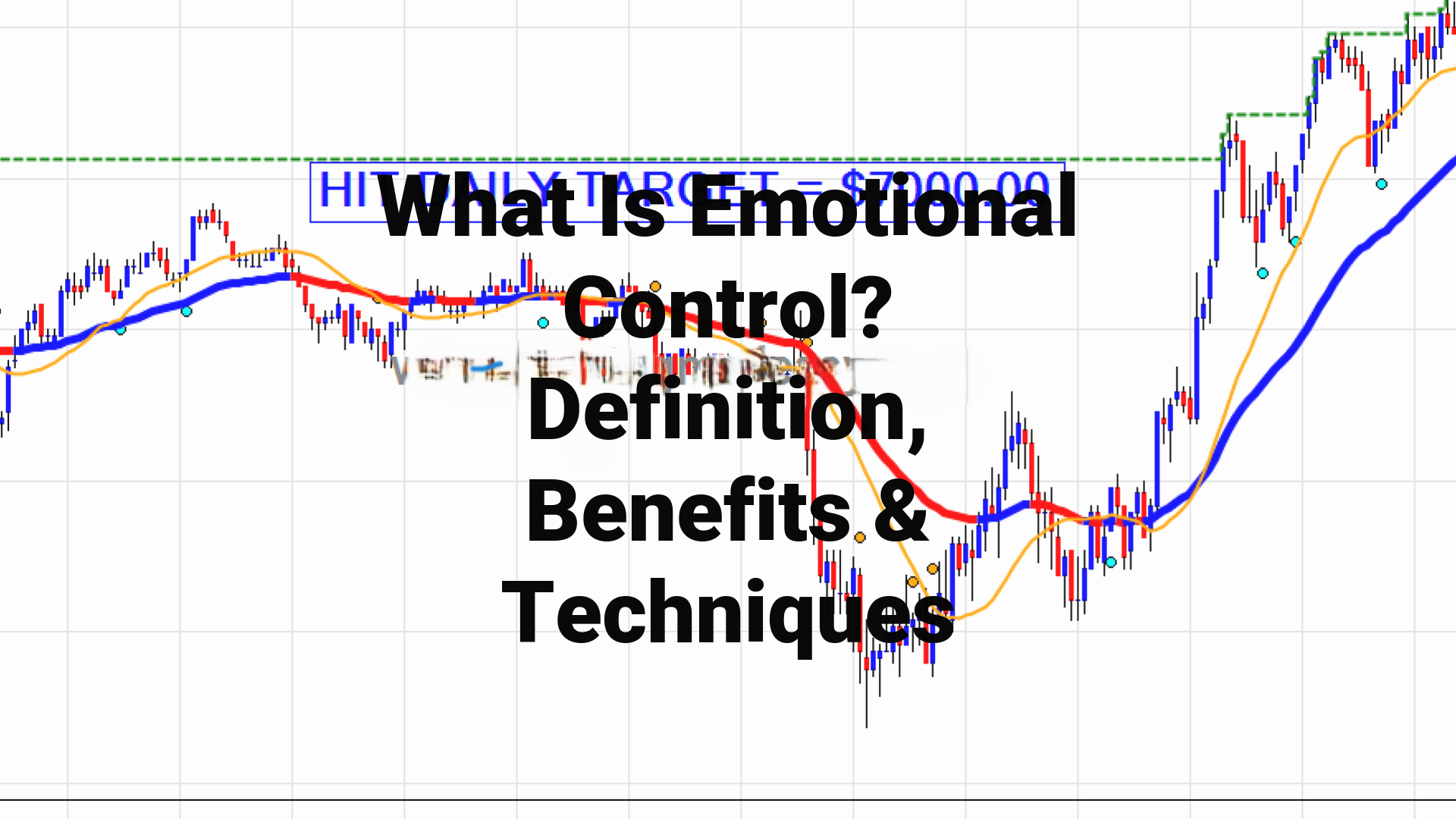Emotional control—also called emotion regulation—is the capacity to notice what you feel, understand why it’s happening, and choose how and when those feelings are expressed. When this skill is weak, anger erupts in traffic, anxiety hijacks important conversations, and impulsive choices ripple through health, money, and relationships. Strengthen it and you think clearer under pressure, resolve conflicts with less drama, and recover from setbacks faster.
This guide unpacks the concept from every angle. You’ll see how psychologists define emotional control, what separates healthy modulation from unhealthy suppression, and the stages that shape the skill from childhood through late adulthood. Research-backed benefits for mental, physical, and social wellbeing will be laid out, followed by warning signs that signal dysregulation. Most importantly, you’ll get a toolbox of evidence-based techniques—breathing drills, cognitive reframing, mindfulness tactics, lifestyle tweaks—and a step-by-step daily practice plan. Quick FAQs and key takeaways finish the piece so you can start using these tools today.
Emotional Control vs. Emotion Regulation: Clearing Up the Terminology
Most experts use the two phrases interchangeably: “control” spotlights the outcome (steady emotions), while “regulation” highlights the process (skills you apply). Either way, you’re talking about guiding—not suppressing—feelings so they serve your goals. You’ll also see synonyms like self-regulation and affect management scattered through the research.
Working definition used in this article
- Awareness – notice bodily and mental emotion cues
- Understanding – label the feeling and its trigger
- Modulation – dial intensity up or down with strategies
- Healthy expression – act in line with values and context
Key components every definition shares
- Emotional awareness
- Cognitive appraisal
- Physiological calming or energizing
- Behavioral expression choices
- Sensitivity to social setting
(Imagine a simple flow chart: Awareness → Appraisal → Modulation → Expression.)
Common misconceptions to address
- Controlling emotions ≠ never feeling them
- Stoicism is not blanket suppression
- Good regulation is a skill, not a personality trait
Why Emotional Control Matters for Mental, Physical, and Social Health
Understanding what is emotional control and why it matters isn’t academic; emotions splash into every system—mind, body, relationships. Solid regulation predicts longer life, higher happiness, and fewer stress-related illnesses.
Mental health impacts
Long-term NIH studies show people who routinely reframe upsetting events are about 50 % less likely to develop anxiety or major depression. Strong regulation interrupts rumination loops and lowers the odds of self-medicating with alcohol, drugs, or other risky coping tactics.
Physical and neurological benefits
Practices like diaphragmatic breathing can drop cortisol up to 30 % within weeks and raise heart-rate variability—a gold-standard resilience marker. Brain imaging reveals thicker prefrontal pathways to the amygdala, translating to fewer blood-pressure spikes when stress hits.
Social and relationship outcomes
Keeping your cool during disagreement signals safety and deepens trust. Couples-therapy data indicate that improvements in emotion regulation explain much of the boost in relationship satisfaction and cut divorce risk two years later.
Decision-making and performance
Clear heads make better calls—whether you’re placing a trade or shooting a buzzer-beater. Controlled-breathing reset drills improved free-throw percentages, and driving simulations found 20 % fewer risky maneuvers when participants regulated emotions first.
How Emotional Control Develops Across the Lifespan
Like language or balance, emotional control unfolds in stages. Biology sets the baseline wiring, but experiences—from toddlers’ tantrum coaching to workplace stress—shape which circuits strengthen and which coping habits stick. Knowing these milestones helps you set realistic expectations for yourself (and the people you coach or parent).
Early childhood foundations
Secure attachment and parental “co-regulation” lay the first bricks. Around age 2 children begin labeling feelings—“mad,” “scared”—while caregivers model soothing through tone, touch, and routine. Successful bids teach the brain that big emotions can be noticed, named, and nudged back to baseline.
Adolescent brain changes and challenges
Puberty pours jet fuel on the limbic system while the prefrontal “brakes” are still under construction. The result: higher highs, lower lows, and peer-driven risk-taking. Sleep deprivation and social media amplify reactivity, so teens benefit hugely from skills like pause-breath-reframe and structured downtime.
Adulthood and ongoing neuroplasticity
Good news—your brain keeps remodeling. Mindfulness practice, CBT, and regular exercise all strengthen prefrontal-amygdala pathways, improving reaction time under stress. New roles (partner, parent, manager) test regulation skills, but also offer daily reps to refine them.
Factors that influence development
Temperament, culture, trauma history, and socioeconomic safety nets each tilt the growth curve. Protective buffers include supportive relationships, predictable routines, and access to skill-building programs—proving that while genetics start the story, environment edits every chapter.
Signs of Strong vs. Poor Emotional Control
You can’t improve what you don’t measure. Use the cues below to spot when your regulation muscle is toned—or when it’s crying for a workout.
Behavioral indicators of healthy regulation
- Responds, doesn’t react, under pressure
- Can sit with discomfort without numbing out
- Adjusts tone and body language to fit setting
- Recovers baseline mood within minutes to hours
Warning signs of emotional dysregulation
- Frequent outbursts or sudden shutdowns
- Impulsive spending, eating, or posting
- Looping rumination or revenge fantasizing
- Self-harm, substance misuse, chronic avoidance
Self-assessment checklist (rate 1 = never, 5 = always)
| # | Statement | Score |
|---|---|---|
| 1 | I lose my temper quickly. | |
| 2 | I can name what I’m feeling. | |
| 3 | I act before thinking. | |
| 4 | I calm down within 10 minutes. | |
| 5 | I replay upsetting events for hours. | |
| 6 | Deep breathing helps me reset. | |
| 7 | Stress makes me withdraw or lash out. | |
| 8 | I seek healthy help when overwhelmed. | |
| 9 | I regret texts or emails sent in anger. | |
| 10 | I adapt coping tools to new situations. |
Add your scores: 10–20 = urgent attention, 21–35 = growing skills, 36–50 = solid control.
Evidence-Based Techniques to Build Better Emotional Control
Knowing what is emotional control is half the battle; the other half is daily practice. Researchers agree that no single tactic works for everyone—mixing cognitive, physiological, and lifestyle tools gives the strongest, most flexible skill set. Start with one or two methods below, track results for a week, and iterate.
Cognitive strategies
- Cognitive reappraisal: Describe the same event with neutral or positive language—“The market dipped, giving me a buying opportunity.” EEG studies show reappraisal lowers amygdala activation within seconds.
- Problem-solving loop: 1. Define the stressor. 2. List controllable factors. 3. Generate three options. 4. Pick one and schedule it. This reduces helplessness that fuels anxiety.
Mind-body approaches
- 4-7-8 breathing: Inhale 4 s, hold 7 s, exhale 8 s. Repeating four cycles drops heart rate ~10 bpm on average.
- Progressive muscle relaxation: Tense each muscle group 5 s, release 10 s, moving head to toe. Ideal for pre-sleep wind-down.
- Cold face splash or ice pack on the neck: Triggers the mammalian dive reflex, instantly calming surging anger or panic.
Mindfulness and acceptance practices
- Noting technique: During meditation, silently label sensations—“thinking,” “tightness,” “sad.” Labeling lights up the prefrontal cortex and dampens emotional charge.
- Urge surfing: Visualize cravings as waves that peak and fade; ride them without acting. Proven effective in DBT for impulse control.
- ACT “allowing”: Say, “I’m noticing worry is here,” instead of “I’m worried.” Creates distance between you and the emotion.
Lifestyle foundations
- Sleep: Aim for 7–9 hours; one night of 5-hour sleep boosts emotional reactivity by ~60 %.
- Nutrition: Pair protein with complex carbs to keep blood sugar—and mood—steady.
- Exercise: 150 min weekly aerobic + two strength sessions raises baseline serotonin and endorphins.
- Moderation: Cap caffeine at 400 mg; keep alcohol under two drinks to avoid rebound anxiety.
Professional tools and therapies
- CBT emotion modules teach automatic-thought spotting and reframe drills.
- Dialectical Behavior Therapy (DBT) offers TIP skills (Temperature, Intense exercise, Paced breathing) for crisis moments.
- Biofeedback gives real-time HRV data so you can watch regulation skills work.
- EMDR targets trauma-linked dysregulation; eight sessions often cut flashback frequency in half.
Combine two strategies morning and night for a month, and re-score the self-assessment to measure gains.
Step-By-Step Plan to Practice Emotional Control in Real Life
Reading about skills is one thing; wiring them into your nervous system is another. The framework below turns the science of emotional regulation into a daily routine you can finish in five to ten minutes. Work through the five steps in order, tweak to fit your life, and revisit the self-assessment table each month to track progress.
Identify triggers and patterns
Write a quick two-column log for one week:
- Column A: situation (who, where, when)
- Column B: emotion + intensity 1-10, automatic thought
Look for clusters—certain people, times of day, or body states (hunger, fatigue) that repeatedly spike your score.
Pause and choose response
When a trigger hits, apply the 10-second rule: inhale 4, hold 2, exhale 4 while silently naming the feeling (“anger at 7”). Neuroscience shows labeling alone dampens amygdala fire; the brief breath buys space to decide what comes next.
Apply preferred strategy
Match tool to moment:
- Anger 5-8 → 4-7-8 breathing + brief walk
- Anxiety 4-7 → cognitive reframe (“uncertainty ≠ danger”)
- Sadness or loss → mindful allowing, supportive text to friend
Keep a mini decision tree on your phone so choices are effortless under stress.
Reflect and refine
End each day with a 3-question debrief:
- What worked?
- What backfired?
- What will I try tomorrow?
Weekly, rate progress on the checklist; adjust strategies accordingly.
Building consistency and habits
Create “if-then” plans: “If my HRV app turns red, then I’ll do two cycles of box breathing.” Stack practice onto existing habits (after morning coffee, before shutting your laptop). Use calendar alerts or an accountability buddy to keep the reps coming—because, like muscles, emotional control strengthens with use.
FAQs About Emotional Control
Quick answers to the most common emotion-control questions.
What does emotional control look like in everyday situations?
Pause, breathe, respond—no yelling in traffic or parenting.
What causes poor emotional control?
Genetics, ADHD, trauma, or chronic stress wire reactivity.
Can you learn emotional control as an adult?
Absolutely; CBT, mindfulness, exercise rewire circuits at any age.
How long does it take to improve emotional regulation?
Consistent practice shows results in roughly six weeks.
Is suppressing emotions the same as controlling them?
Suppression bottles emotion; regulation feels then channels it.
Key Takeaways & Next Steps
- Definition in a nutshell: Emotional control is the skill of noticing feelings, making sense of them, and choosing a response that lines up with your goals.
- Why it matters: Strong regulation lowers stress hormones, protects mental health, sharpens decision-making, and keeps relationships on track.
- Lifespan insight: The ability is shaped early by caregivers, tested in adolescence, and can still be upgraded in adulthood through neuroplastic training.
- Red-flag checklist: Frequent blow-ups, rumination loops, or risky coping signal dysregulation that deserves focused practice—or professional help.
- Top techniques: Blend cognitive reappraisal, breath work, mindfulness, sleep hygiene, and, when needed, evidence-based therapies like CBT or DBT.
- Daily practice plan: Track triggers, pause-label-breathe, apply the right tool, debrief nightly, and use “if-then” cues to build lasting habits.
Ready to put emotional steadiness to work where every second counts? Automate the market swings and sidestep impulsive trades with Day Trading Made Easy.


Leave a Reply